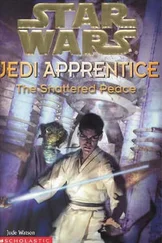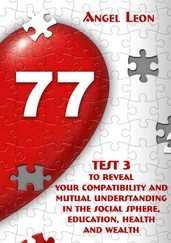—Memoirs, Dr. Simon Raphael, First Director of the Gravities Research Institute, Pluto. Published posthumously, 2429
NaPurHab
Orbiting the Moonpoint Singularity
THE MULTISYSTEM
“And here be coming numero uno,” Mudflap Shooflyer announced as the first of the Charonian things arrived.
“Thanks, Mud, but they didn’t name me for my hearing,” Eyeball growled as she stared out the porthole. “I can see it.”
“No harm in saying it,” Mud replied.
“But what the foggy blue that thing gone do?” asked Ohio Template Windbag. “Weirdest looking thing seen in some time. ’Cepting you, ’course, Mudflap.”
“Thanks for nod, hefe,” Mudflap said, clearly pleased with the compliment.
“Pipe down anytime you like, boys,” Eyeball said, struggling to concentrate on her instruments. Bad enough that Mudball smelled the way you’d expect a chap with that label would. Chatter made it worse. “Else clear out and watch from elsewheres.”
“Sorry. Will zip it,” Ohio said. At least Ohio had a reason for being here. He did, after all, run the hab. But why did he have to bring a schnorrer like Mud along? Maybe it was Be Nice to Losers Day. Eyeball knew it was sometime this week, but she’d been too busy to check her calendar.
Her hardware was all ticking along fine, recording everything. What was the thing going to do? She punched up the long-range scope and set it to auto-track the thing.
The massive Charonian sure as hell wasn’t like any SCORE or CORE Eyeball had ever heard tell of. Most of them were shaped like short, fat cigars. This thing was more or less rectilinear, and about twenty times the size of the biggest CORE on record. It had what appeared to be cantilevered swivel capture latches running along the edges of one long face. It was also dazzle-brite white in color, a definite departure for the Charonians, who usually favored a dirty grey for most of their gear. Sum up, a big white shoe-box shape with legs. There were fifteen more just like it on the way.
Now it was hanging in space, inside the Moonpoint Ring, and exactly abeam of the Ring’s interior surface, lining up with it perfectly. And then, suddenly the thing was moving , straight for the Ring, fast, like maybe it was going to ram it or some such. Oh, God damn, don’t let it be. “Were those things here to smash up dead Moonpoint Ring, clear the way for something else? The hab would get caught in debris for sure, beat to rubble.
But the big white box stopped moving as sudden as it had started, less than a hundred meters from the Ring’s inner surface. Its legs unfolded and it moved gently in, settling itself neatly into place before the legs wrapped themselves around the ring.
It sat there, quiet and peaceful, and that was that.
“Now what the hell was that ’bout?” Mudflap demanded.
“Won’t know for sure till rest of them arrive,” Eyeball said. “But my guess is the Charonian docs is paying a housecall.”
Kourou Spaceport
Guiana, South America
EARTH
The briefing room was a dreary, windowless grey box. It was aseptic rather than antiseptic, too grey and too drenched with disinfectants for anything to grow, but a grimy, cold little spot for all that. Even without the disinfectants, it was too dispirited a place for any but the most determined of germs, and nothing around here seemed all that determined.
The air conditioning was winning out over the ferocious heat of the launch base. Maybe winning by a little too much. The spaceport was only a few hundred kilometers north of the equator, and every time Sianna stepped outside, she felt as if she were walking into a sodden wall of heat.
Sianna, Wally, and Sakalov sat on one side of a rickety, stained old table, the debris of some previous meeting still in evidence here and there—crumbled bits of paper, a dried-up spot of spilled tea. A far cry from the luxurious appointments in Bernhardt’s office only two weeks before.
Bailey, the briefing officer, sat on the other side of the table. His coveralls were rumpled, and he hadn’t shaved in quite a while. He was a slouchy, sallow-faced, rubbery-skinned little man, with what appeared to be the stub of a cigarette hanging out of the edge of his mouth. He looked as if he had not been to bed in ten years, and did not care.
“Aw right,” Bailey said, taking a noisy slurp from his coffee mug, “let’s get this thing started. You folks mind if I don’t throw ninety-four different sims up on the screen? I’d rather just use plain English.”
Wally seemed as if he were about to say something, but then he thought better of it. Bailey nodded, scratched himself, and went on.
“Good. Then here’s the short form: We’ve started the massive cargo lift to NaPurHab. We’re lifting at least fifteen major cargo craft a day, every day for the next three weeks, plus all the smaller stuff we can manage. We want to send everything we can, with lots of spares, because a lot of it won’t get there.”
“The loss rate is still close to thirty percent, isn’t it?” Sakalov asked, as if he were asking about the price of onions, rather than his own odds of survival.
“Worse than that,” Bailey said, a bit reluctantly. “The COREs have been getting more and more aggressive. We expect the loss rate to get a hell of a lot worse real soon. We have to assume that once the main body of SCOREs hits town, we will lose whatever remaining access to space we still have. The odds on a given cargo getting through will go way down. Say, to one in a hundred. We might be able to launch in radar-transparent stealthships, but that is very tough engineering.
“The good news is that we have gotten better and better at analyzing what the COREs do. Over the years, we have thrown a lot of cargoes at NaPurHab—and seen which ones get taken out. We know what sort of craft, moving in what sort of trajectories, the COREs are most likely to attack. We can send our cargoes in the lower-risk trajectories—and send you people in the lowest-risk ones of all. But there is a better-than-zero chance that the COREs will attack any given object more than two meters long within about three hundred thousand kilometers of Earth. If the COREs decide that you might impact on Earth, they will attack you.”
“Wonderful,” Sianna said. “How about if we bend over and you send us in one-meter-long ships?”
“Don’t think we haven’t thought about it,” Bailey said, “but we’d have to launch you rolled in a ball. You wouldn’t survive the boost phase. We’ve also learned that the odds don’t change much for smaller-size craft. Once you’re over that two-meter threshold, it doesn’t much matter if you’re two and a half meters or two hundred fifty.”
“Great,” Sianna said.
“I know,” Bailey said. “But the best we can do is get you up and out of here at the lowest-risk trajectories during the launch windows we’ve calculated to be lowest risk. And we want to get you up there sooner rather than later. The SCOREs are headed this way. We don’t know what they will do when they get here, but we have to assume they will join the COREs in attacking our ships.”
“So when do the SCOREs arrive?” Wally asked.
“We don’t know that, either,” Bailey admitted sourly. “One cluster of them will boost and then coast, and then another, and another, while the first drifts off course until there’s a course correction.”
“Sounds like limits on the ability of the Sphere to transmit gravity power,” Sakalov said. “It must be directing a single gravity-power beam from one cluster of SCOREs to the next, nudging each group when it can spare the power from some other need. The Sphere is spreading itself pretty thin.”
Читать дальше









![Ширли Мерфи - The Shattered Stone [calibre]](/books/436059/shirli-merfi-the-shattered-stone-calibre-thumb.webp)


